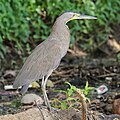
The peppershrikes are two species of passerine bird found in tropical Central and South America. They form the genus Cyclarhis, part of the vireo family.

Leiothrix is a genus of passerine birds in the family Leiothrichidae. They belong to a clade also containing at least the liocichlas, barwings, minlas and sibias. The sibias are possibly their closest living relatives.
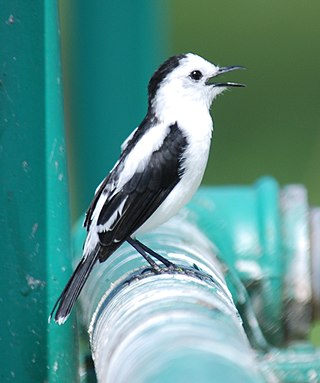
The pied water tyrant is a small passerine bird in the tyrant flycatcher family. It breeds in tropical South America from Panama and Trinidad south to Bolivia.

Sabrewing is the common name given to hummingbirds classified in the genus Campylopterus. The group includes ten species. They are Neotropical birds that inhabit mountainous forests, generally near streams.
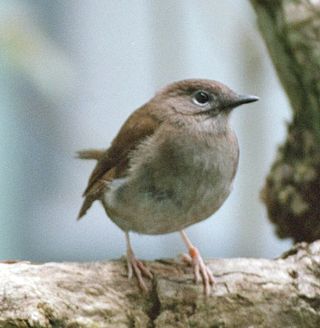
Myadestes is a genus of solitaires, medium-sized mostly insectivorous birds in the thrush family, Turdidae.
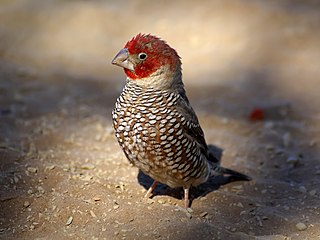
The red-headed finch is a common species of estrildid finch found in Africa. It has an estimated global extent of occurrence of 1,600,000 km2. It is found in Angola, Botswana, Lesotho, Namibia, South Africa and Zimbabwe.

Amadina is a genus of estrildid finches that are found in Africa.
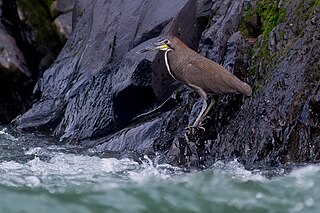
The fasciated tiger heron is a species of heron in the family Ardeidae. It is present in southern Central America and parts of northern and central South America, where its natural habitat is rivers.

The rufescent tiger heron is a species of heron in the family Ardeidae. It is found in wetlands from Central America through much of South America.

The zigzag heron is a species of heron in the family Ardeidae, also including egrets and bitterns. It is in the monotypic genus Zebrilus. It is found in Bolivia, Brazil, Colombia, Ecuador, French Guiana, Guyana, Peru, Suriname, and Venezuela. Its natural habitat is subtropical or tropical swamps.
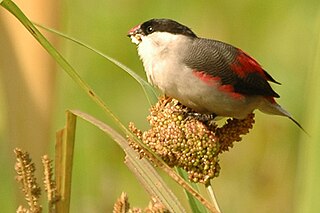
Estrilda is a genus of estrildid finch in the family Estrildidae.
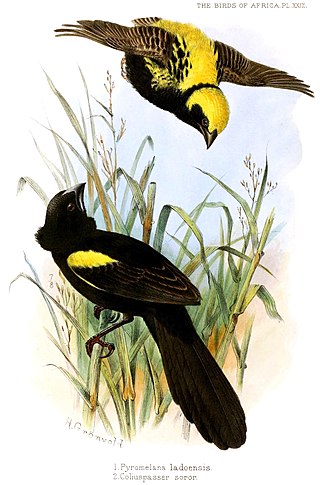
Euplectes is a genus of passerine bird in the weaver family, Ploceidae, that contains the bishops and widowbirds. They are all native to Africa south of the Sahara. It is believed that all birds in the genus are probably polygynous.

Fluvicola is a genus of birds in the tyrant flycatcher family Tyrannidae.

Pellorneum is a genus of passerine birds in the family Pellorneidae. Some of its species were formerly placed in the genus Trichastoma.

Sporophila is a genus of Neotropical birds in the tanager family Thraupidae. The genus now includes the six seed finches that were previously placed in the genus Oryzoborus.

The woodshrikes are a genus, Tephrodornis, of birds in the family Vangidae.

Xiphorhynchus is a genus of birds in the woodcreeper subfamily (Dendrocolaptinae) that are found in Middle and South America.

Dendroplex is a genus of birds in the woodcreeper subfamily Dendrocolaptinae. It was long merged into Xiphorhynchus, but its distinctness has now been established.

Crithagra is a genus of small passerine birds in the finch family (Fringillidae). They live in Africa and Arabia.

Lyrurus is a genus of birds in the grouse subfamily. They are known as black grouse because the male's plumage of both species is colored black as its base colour.

